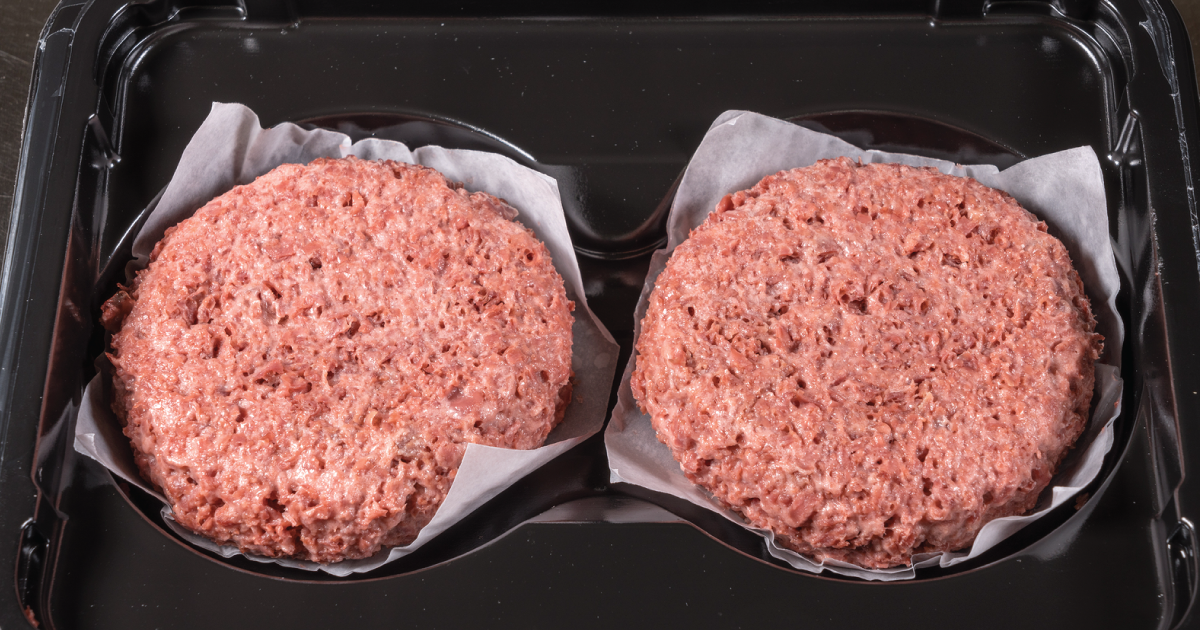
Fake Meat Is Junk Food
The junk food industry has a new product they are offering in exchange for your health and finances. Using strategies to position it as a healthy alternative for natural meat, the industry’s fake meat is just another name for ultraprocessed food, full of genetically engineered (GE) and pesticide-laden ingredients designed to look as much like meat as possible.
September 25, 2019 | Source: Mercola.com | by Dr. Joseph Mercola
The junk food industry has a new product they are offering in exchange for your health and finances. Using strategies to position it as a healthy alternative for natural meat, the industry’s fake meat is just another name for ultraprocessed food, full of genetically engineered (GE) and pesticide-laden ingredients designed to look as much like meat as possible.
In an effort to get you hooked on it, it’s marketed as healthier and better for the environment — which may lead you to believe you’re eating good food while protecting your local air and water supplies. The manufacturers are so intent on mimicking foods found in nature that they’ve even genetically engineered “blood” for their fake meat products.1
Food critics2 are divided on the taste, with some finding the texture pleasing, but not tasting like a burger. Others say that only when the burger is piled high with caramelized onions, vegan mayo and mashed avocado, does the flavor likely approximate meat.
When it comes to organic offerings, food manufacturers would like you to believe they can improve on nature but, historically, this has been nearly impossible to achieve. Ultraprocessed foods have contributed to the obesity epidemic,3 rising rates of cardiovascular disease and an increased risk of all-cause mortality.4
If you think ultraprocessed foods are only found in the junk food aisle, though, it may surprise you to learn that, according to Current Developments in Nutrition, many foods you eat most likely include fake meat ingredients:5
“Besides salt, sugar, oils, and fats, ingredients of ultra-processed foods include food substances not commonly used in culinary preparations, such as hydrolyzed protein, modified starches, and hydrogenated or interesterified oils.
Additives whose purpose is to imitate sensorial qualities of unprocessed or minimally processed foods and their culinary preparations or to disguise undesirable qualities of the final product, such as colorants, flavorings, nonsugar sweeteners, emulsifiers, humectants, sequestrants, and firming, bulking, de-foaming, anticaking, and glazing agents.”
Health Is Not Driving a Meat Makeover
The Heart and Stroke Foundation of Canada warns you should not be swayed by deceptive marketing tactics using words such as “healthy” and “natural”6 when you make food choices. Unfortunately, it appears that some consumers believe the advertising promises.
While called a plant-based meat alternative, Beyond Burgers and Impossible Burgers are an ultraprocessed conglomeration of chemicals, concocted by pulling protein from soy and a few other processed concentrates. Amy Keating, registered dietitian and Consumer Reports nutritionist, commented:7
“… while its starting materials may be plants, the main ingredients are all highly processed concentrates, oils, and flavors. If you want the health benefits of plants, eat them as whole foods with their nutrients and fiber naturally present.”
Adding to the discussion, both Impossible Burger and Beyond Burger have nearly the same amount of total fat and calories as real beef burgers. In addition, both also have much more processed sodium added. As a reporter at NBC News so succinctly pointed out:8
“If eating more realistic fake meat was about health, the offerings would be far lower in salt content, contain fewer calories and have a bit less dietary fat. None of them do, because the point was never to live up to the marketing of healthier eating. It was to simply act as a smooth replacement for the meat we worried about eating in our day-to-day lives.”
The fake meat industry is riding the coattails of the real risk that concentrated animal feeding operations (CAFOs) pose to the environment and to human health. However, fake meat manufacturers have turned to the laboratory to boost profits and drive sales rather than support sustainable and environmentally friendly real food production.
Chemical-Packed Fake Meat Contains GE Blood
After they mimicked the look and texture of meat, manufacturers gave consumers the taste and color of blood using a compound produced by genetically engineered yeast cells.9 The compound is called soy leghemoglobin, coming from the roots of the soybean plant. On a chemical level, it’s similar to the heme iron molecule found in mammal blood and it adds some of the texture and bloody look of an all-beef patty.
But manufacturing it to scale is impossible with just soybeans —it takes one full acre of soybeans to produce 1 kilo of leghemoglobin.10 Plus, it requires genetic work in the lab to insert the soy leghemoglobin into engineered yeast cells. During the fermentation process, the GE yeast produces large quantities, in addition to dozens of other proteins.
Impossible Burger’s scientists fed the leghemoglobin to rats for 28 days to determine the risk of allergic reaction or toxicity. Dana Perls, from Friends of the Earth, pointed out that the rats exhibited alterations in blood chemistry, which the company did not follow up on.11
Unfortunately, the U.S. Food and Drug Administration only requires research by the manufacturer to determine food safety and has not conducted any independent tests.12
Michael Hansen, Ph.D., Consumer Reports senior scientist, notes there is no long-term data demonstrating the effect of soy-like hemoglobin in humans.13 The process of manufacturing the compound yields at least another 45 by-product proteins, also consumed with the leghemoglobin.14
The FDA has classified the Impossible Burger as generally recognized as safe using data provided by the University of Nebraska and the University of Wisconsin.15 Other experts are not convinced.
According to the Center for Food Safety, 94% of the soybean crops grown in the U.S. are genetically altered.16 And, Hansen17 warns there are not enough data to determine human safety when consuming chemical compounds, as these compounds are produced from genetically altered yeast harvested from genetically altered soybeans.
